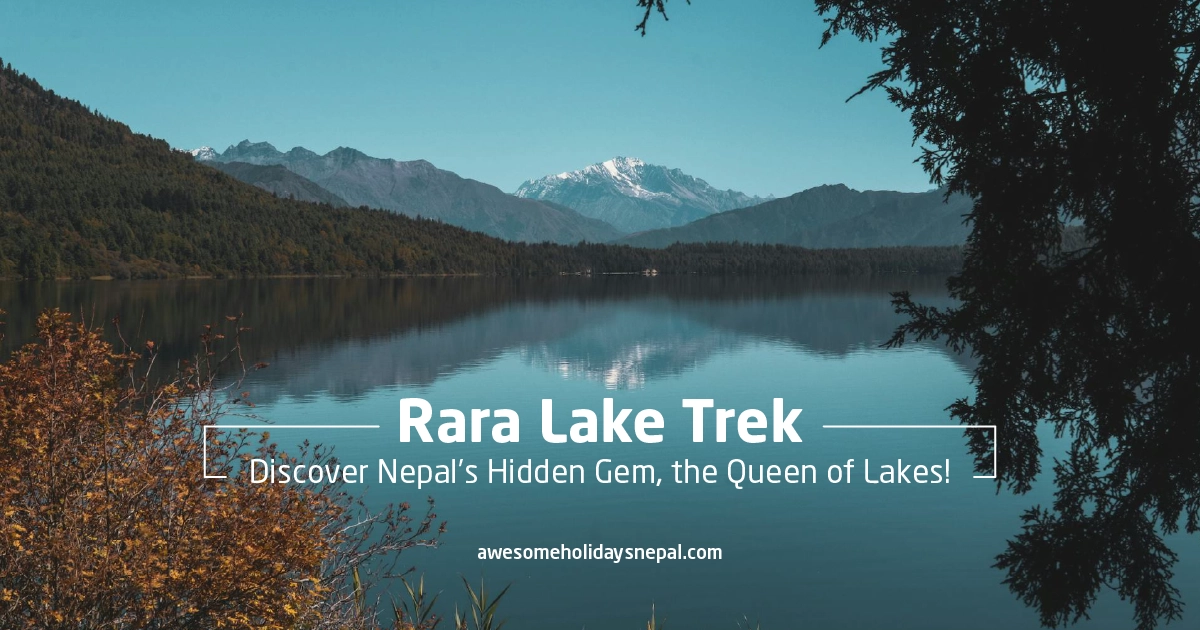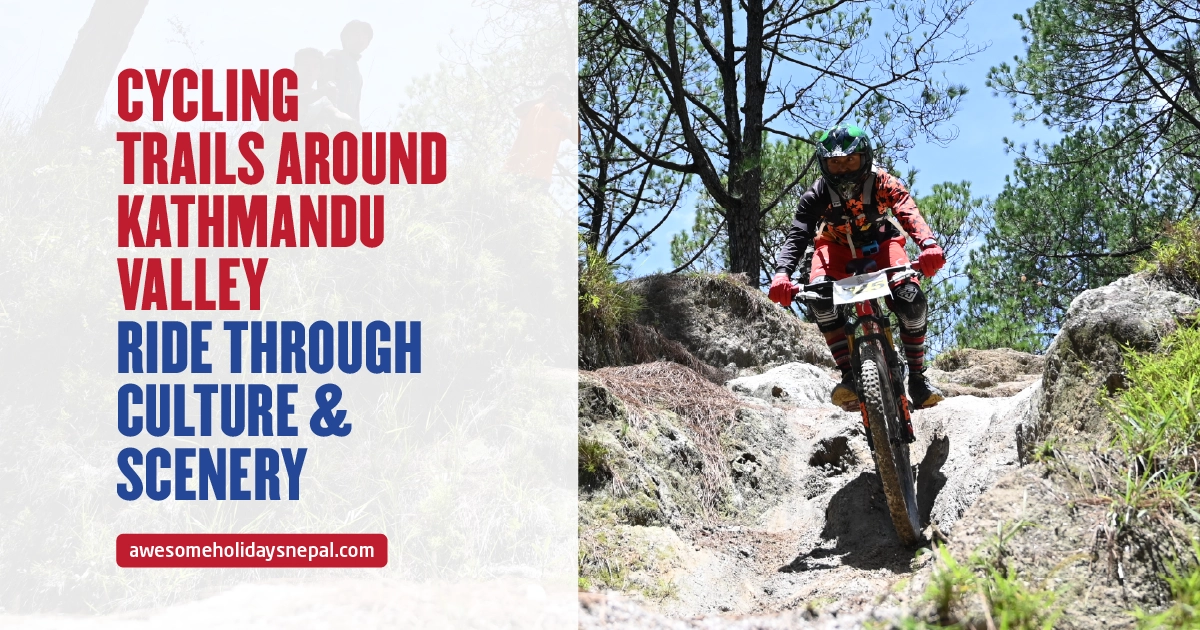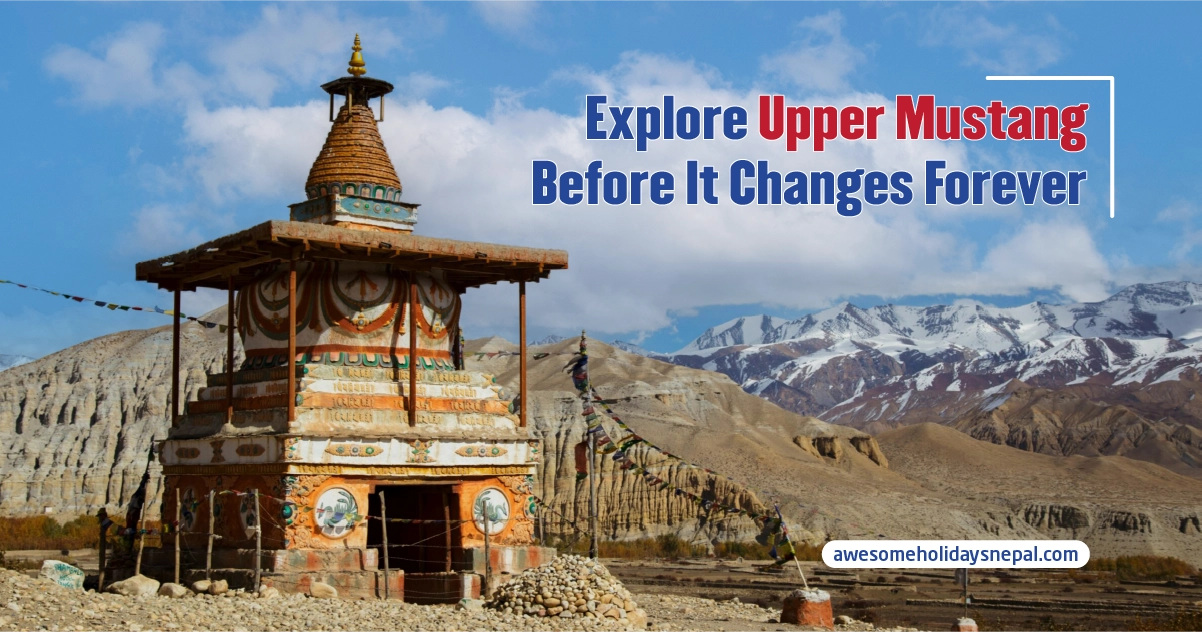Everything You Need to Know Before the Manaslu Circuit Trek
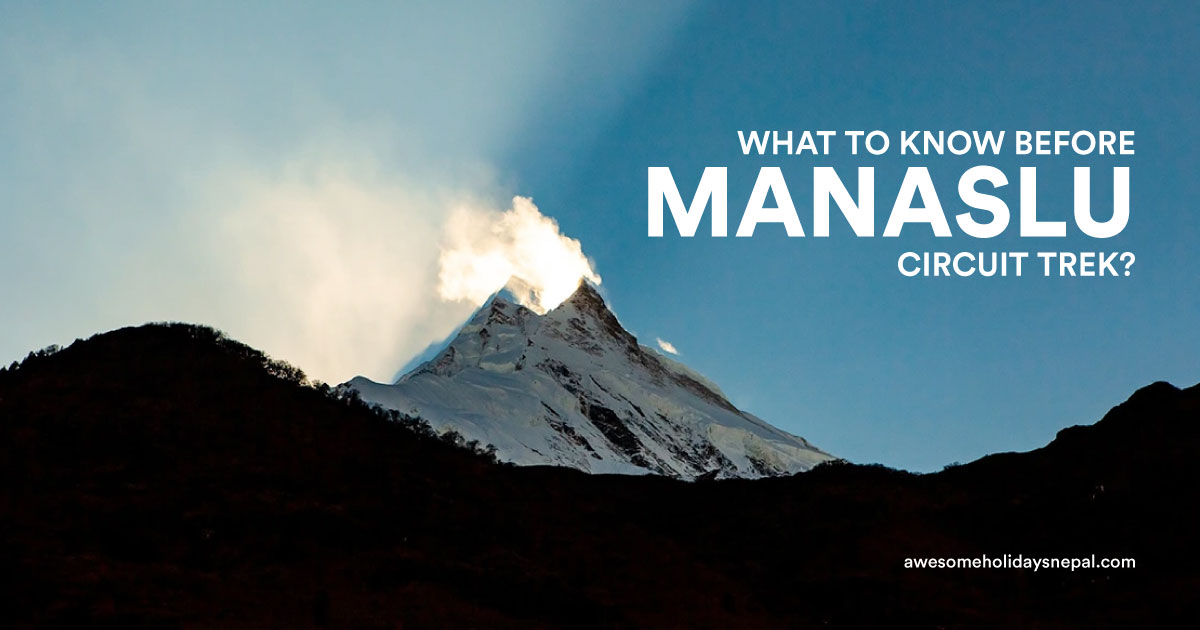
If you are looking for an off-track adventure in the Himalayas, the Manaslu Circuit Trek should be on your bucket list. The Manaslu region offers solitary routes as an alternative to more popular trekking routes like the Annapurna or Everest. Let’s dig into everything you need to know before the Manaslu Circuit trek.
Manaslu circuit trek offers a walk through diverse landscapes, picturesque villages, and spectacular views of the mountains of the Mansiri range in the Himalayas. The remoteness of the Manaslu region attracts thousands of trekkers for its beauty and the tranquility of the trail.
Though the Manaslu Circuit Trek poses challenges, it is liked by beginners with proper preparation and a spirit of adventure. It is a challenging 14-day trek that demands moderate physical fitness, but no prior experience is necessary. Get ready to embark on the journey of a lifetime as you immerse yourself in the Manaslu region.
Read the blog to find out more about things to know about the Manaslu Circuit trek.
Mount Manaslu: The Killer Mountain
Mount Manaslu (8,163 m), also known as Kutang or Kampunge, is known for its sharp and picturesque peak. It lies 8,156 meters above sea level and is the eighth-highest mountain in the world. Manaslu came from the word “Manasa” and translates as intellect, soul, or spirit. Hence, this mountain is also known as the “Mountain of the Spirit“.
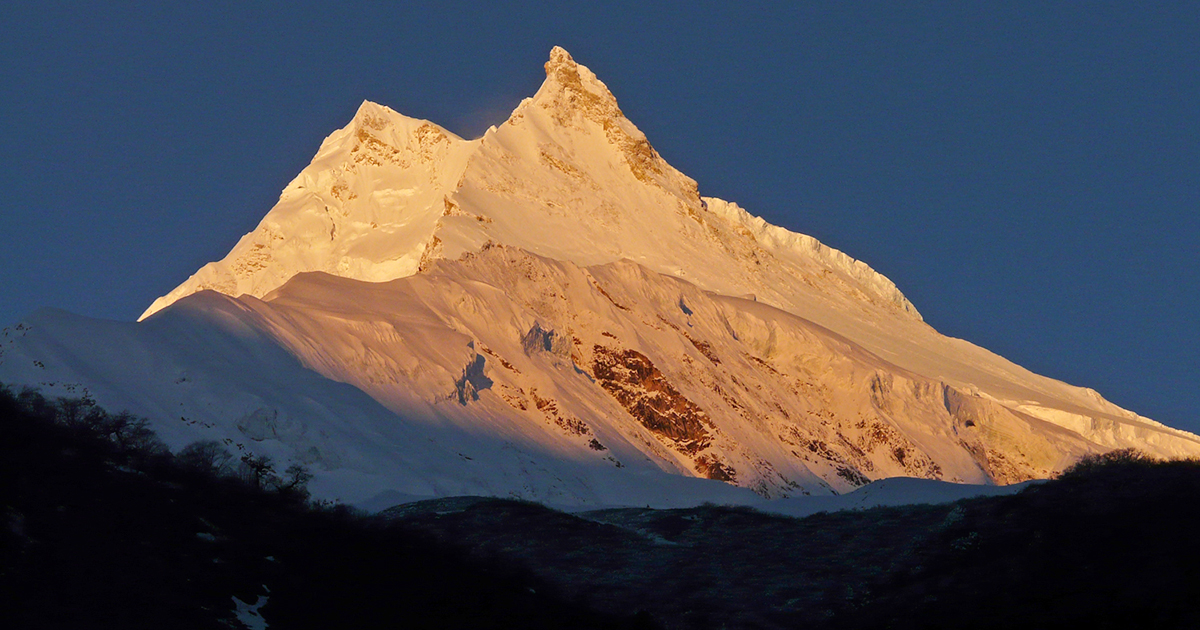
From a climber’s perspective, the mountain is less technical than Mount Everest, yet the fatality rate is high. It has claimed the lives of many mountaineers. Hence, it got the nickname “Killer Mountain”. The problematic formation, continuously ongoing avalanches, and unpredictable changing weather make the expedition harsh and even take the lives of the mountaineers.
If you want to find out why Manaslu is called the “Killer Mountain,” read our blog.
The Japanese expedition team first climbed Mount Manaslu. On 9 May 1956, Toshio Imanishi and Gyaltsen Norbu, the sherpa Sardar, reached the summit of Manaslu. The Northeast Ridge Route is one of the popular routes for climbing Manaslu.
Why is it called the Manaslu Circuit Trek?
For typical trekking, the destination is the base camp of the respective mountain. The trekkers reach the base camps and return to lower altitudes, as in the Everest Base Camp and Annapurna Base Camp treks.
For Manaslu, it is something different. In this Manaslu circuit trek, the Manaslu Base Camp is not the destination but only a side trip. For the Manaslu Circuit Trek, you are making a loop in your trek, so you start in Machachha Khola, reach the Tsum Valley, stop by Manaslu Base Camp, cross Larke Pass, and then end your trek in Besi Sahar in the Annapurna region.
Everything You Need to Know Before the Manaslu Circuit
Best Time to Trek the Manaslu Circuit
The best time to trek the Manaslu Circuit is the spring (March to May) season. This is considered the best season, the temperature ranges from 10 to 20 degrees Celsius in the lower regions. As we ascend above 3000 m, the temperature decreases, and nights become colder.
Another season to trek in the Manaslu region is the autumn (September to November). This season has the most favorable weather and average temperature suitable for trekking. The spring season is best as we can walk into the rhododendron blossom, and walking through the lush forest along with vibrant colors adds the sensation of completeness to the trekkers. The open and clear sky provides opportunities to view the incredible mountains.
What to pack for the Manaslu Circuit trek?
The packing list for Manaslu is similar to any other trek in Nepal. As you are trekking to the high mountains, you need a pair of good trekking boots and a high-quality sleeping bag that will keep you warm in freezing temperatures.
A decent down jacket, thermals, and a good fleece, water filters, a water bottle with Water purification tablets,a Headlamp or flashlight with extra batteries, a pair of sunglasses, a cap, and other sun protection are a must. Gloves, hats, trekking poles, mini crampons (micro spikes) for the crossing of the Larke Pass, your camera setup, phone, spare batteries, and a map are some other necessities.
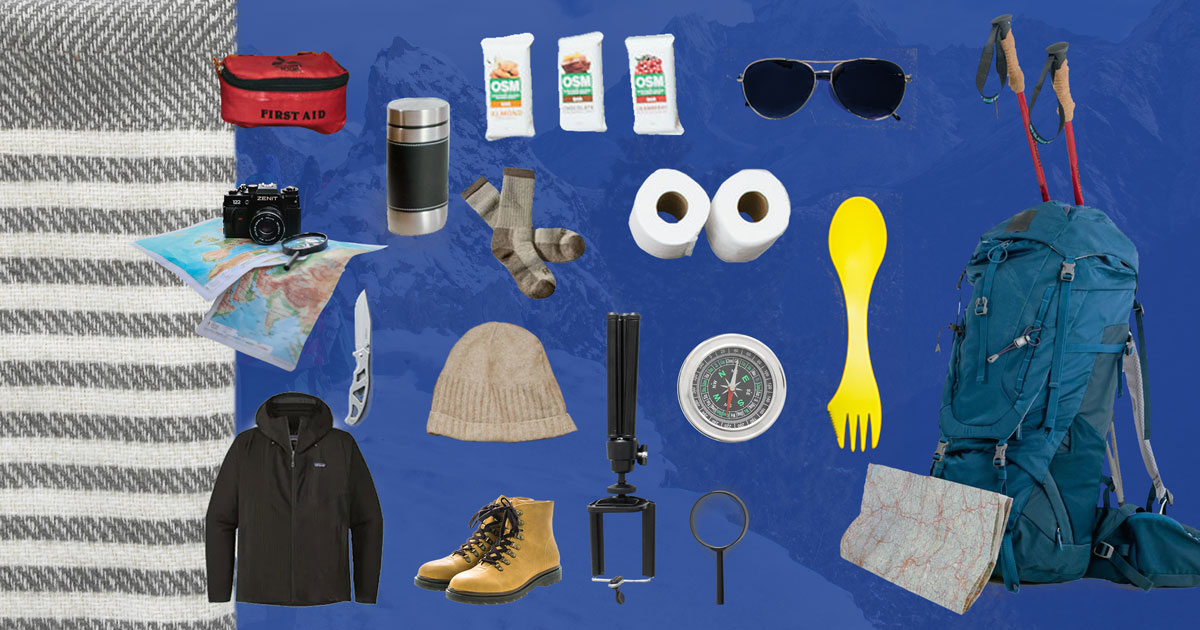
Make sure to make a list of essentials beforehand. You have your porter to carry your essentials, but it’s you who will carry your backpack with essentials. Hence, you need to choose your pack wisely. Here is a quick guide for packing light for trekking in Nepal.
What Permits are Required for the Manaslu Circuit Trek?
Any trekker would need three permits to trek to the Manaslu region. You can get these permits from the Nepal Tourism Board after you arrive. If you have booked a trip with a proficient travel partner like Awesome Holidays Nepal, then the company will take care of it for you.
a. Manaslu Restricted Area Permit (MRAP)
During the Manaslu Circuit trek, the route passes through the Samdo Village near Tibet, which is a restricted zone. Hence, one needs to get a special permit to trek in this region only via licensed and Nepal government-registered trek and tour companies. The cost of this restricted area permit varies according to the season and the crowd in the region.
b. Manaslu Conservation Area Project (MCAP) Permit
In addition to MRAP, you will also need an MCAP permit. The Manaslu Conservation Area Project (MCAP) Permit is purely dedicated to conserving the Manaslu Conservation Area.
c. Annapurna Conservation Area Permit (ACAP)
Since the trek trail of Mansalu also connects with the Annapurna Conservation Area, one must get an ACAP permit as well, which can be obtained from Kathmandu or local offices of ACAP.
Physical Fitness and Training Tips
Compared to other trekking routes, this is considered as harder than the Langtang Trek and Annapurna Base Camp trek. It is not an easy trek in Nepal. Indeed, it is not like the other treks where you get to stay at the teahouses. The trekking team must carry their rations and other supplies themselves. Some also consider this a bit easier than the three-pass trek of the Everest region.
Whatever, one must be aware of the high altitude and acclimatization technique to trek in the high Himalayas. Cardiovascular exercises such as cycling, swimming, and running increase the fitness of the body. Similarly, regular physical exercises help to strengthen the muscles and prepare mentally for the challenges.
Crossing the Larke La Pass
The Larke La pass is the highest point in the Manaslu Circuit trek at an altitude of 5,106 m. The particular day of passing across the Larke La pass includes an ascent of over 750 m and a descent of 1,500 m. This pass connects the Budhi Gandaki Valley in the east to the Marsyangdi Valley in the west.
On a clear day, one can observe the view of Larke Glacier and other peaks like Gyaji Kung (7, 030m), Kang Guru (6,981 m), Cheo Himal (6,820 m), Himlung Himal (7,126 m), and Annapurna II (7,937 m).
Normally, the trip to Larke La starts at 3 AM early in the morning to escape the cold wind of the early morning. Micro crampons are often used on the descent to stay safe from the slippery path.
Food and Accommodation
The Manaslu Circuit Trek is a remote trekking trail. From the early stages of trekking, camping trekking is famous in this region. Though some teahouses are available, trekkers prefer to have a camping trek due to the remoteness of the place.
The Manaslu circuit and the neighboring Tsum Valley trek have a lot of new teahouses established throughout the trekking route. The quality and amenities they provide are more basic than they provide in ABC or EBC, but still, they are comfortable in such remote areas. The teahouses have double beds on a twin-sharing basis in the Manaslu Circuit.
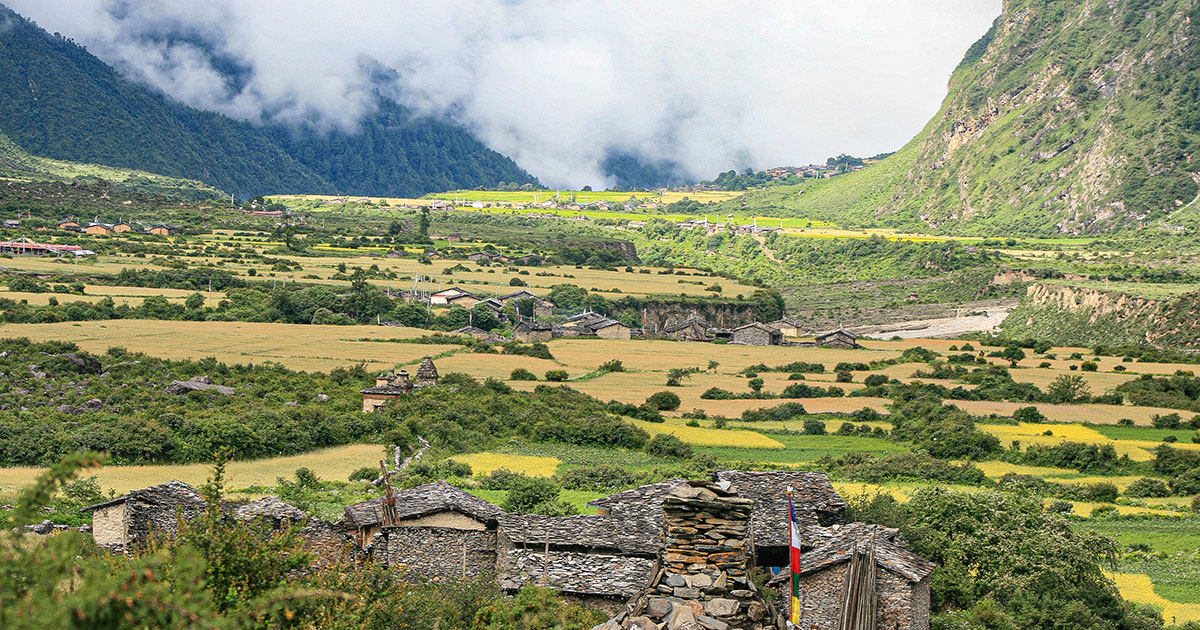
Though they will provide you with blankets, it’s always good to carry your sleeping bags. Some of the teahouses even have a WIFI connection so you can send emails and upload photos to your social media. This tea house also provides you with a warm, nutritious dinner and breakfast at your request.
Cultural Highlights Along the Trail
During the trek, one is immersed in the rich culture of Sama Gaon and Samdo villages, experiencing the unique blend of Nepalese and Tibetan ethnic groups throughout the trail. The treat and hospitality of the friendly locals on your way give a blend of Nepalese and Tibetan traditions. The Sama Gaon, Lho, and Namrung villages are mostly inhabited by Gurung and Ghale communities. Their economy is mainly dominated by agriculture and is more influenced by tourism in the modern age.
Tea houses and lodges are increasing along the trail. This has given an increase to the diverse economic aspects of the local people. The entire route is rich in Buddhist culture influenced by the Tibetans. There are many walls, meditation caves of ancient monks, prayer flags of Nubri Monastery, Pungyen Gomba, and other monasteries along the way.
Forest and Wildlife
The forest is mostly comprised of rhododendron forest, sal, and pine. Bamboo also comprises major parts of the vegetation. The circuit trek lies mostly within the Manaslu Conservation Area and also touches some portion of the Annapurna Conservation Area. As you enter the forest trail, you will witness various species of monkeys and langurs. Other animals that are found in this region are Tahr, Agali, Pika, Himalayan Marmots, and snow leopards.
Altitude Sickness and Acclimatization Tips
Due to the high altitudes on the Manaslu Circuit Trek, altitude sickness is a common concern, particularly at Larke Pass (5,106 meters). To minimize the risk, systematic acclimatization is crucial. Give your body enough time for a gradual ascent and allow for adjusting to the changing altitude.
Dividing the itinerary with an additional day for acclimatization at Samagaun (3,530 meters) or Samdo (3,860 meters) can be advantageous. Avoiding alcohol and caffeine, staying hydrated, and eating high-carbohydrate meals to maintain energy levels are good for keeping the rhythm of the body and pace.
Knowing about altitude sickness and the various symptoms like headaches, dizziness, nausea, or difficulty breathing will save you from possible health complications. Trekking with an experienced guide familiar with altitude sickness management is also highly recommended.
What Other Activities Can to Do During the Manaslu Circuit Trek?
Generally, the Manaslu circuit trek is a 14-day trek. The adventure can be extended to side trips and the week-long adventure through the Tsum Valley. The Manaslu Circuit offers some of the best side trips. One of the popular extensions can be a week-long journey to Tsum Valley, known for its unique Tibetan Buddhist culture, ancient monasteries, and stunning landscapes.
Trekkers can also visit Birendra Taal, Dharamsala, the holy Pungyen Gompa (4,050 m), Serang Gompa (3,100 m), and Hinang Gompa (4,020m), a tranquil monastery nestled in a serene valley, ideal for soaking in mountain vistas and cultural immersion.
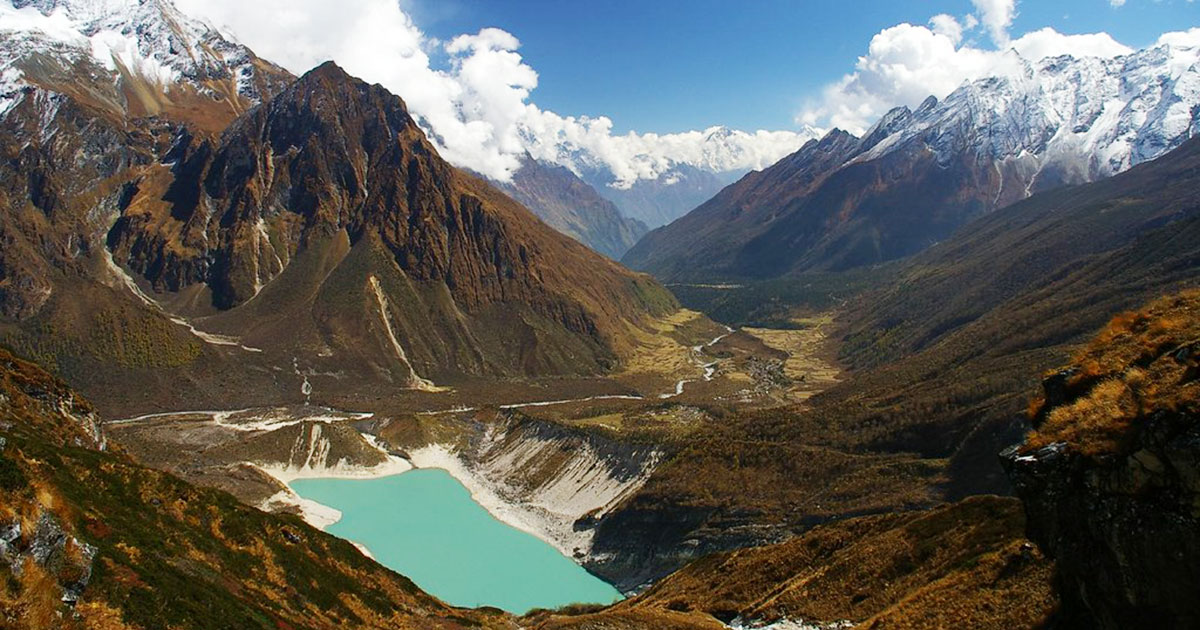
Here are some other highlights of the Manaslu region:
- Pungyen Gompa: This gompa lies at the old Manaslu Base Camp at a height of 4,050 m. It is a day trip that starts on the trail between Shyala and Samagaon. The spiritual gompa offers fantastic views of Mount Manaslu, Himal Chuli, and Ngadi Peak (peak XXIX).
- Kalcchuman Lake (Kal Tal): This is also known as Hidden Death Lake (3600m). It takes about 6 hours to reach the serene lake from Prok village. This lake is spiritually significant for Buddhists who gather for a holy bath during full moon days. There are some tales of the curse of the lake befalling the lake.
- Hinang Gompa: After walking 1 hour from Lihi up to Hinang Khola, the Hinang Gompa can be reached. It’s a Buddhist monastery that is tucked in the Manaslu region at an altitude of 3,100 m.
- Lho: The popular Ribung Gompa of Manaslu lies in the Lho village against the backdrop of stunning mountain views. The Ribung monastery stands right before the Magical Manaslu at a perfectly set hilltop, visible anywhere from the territory.
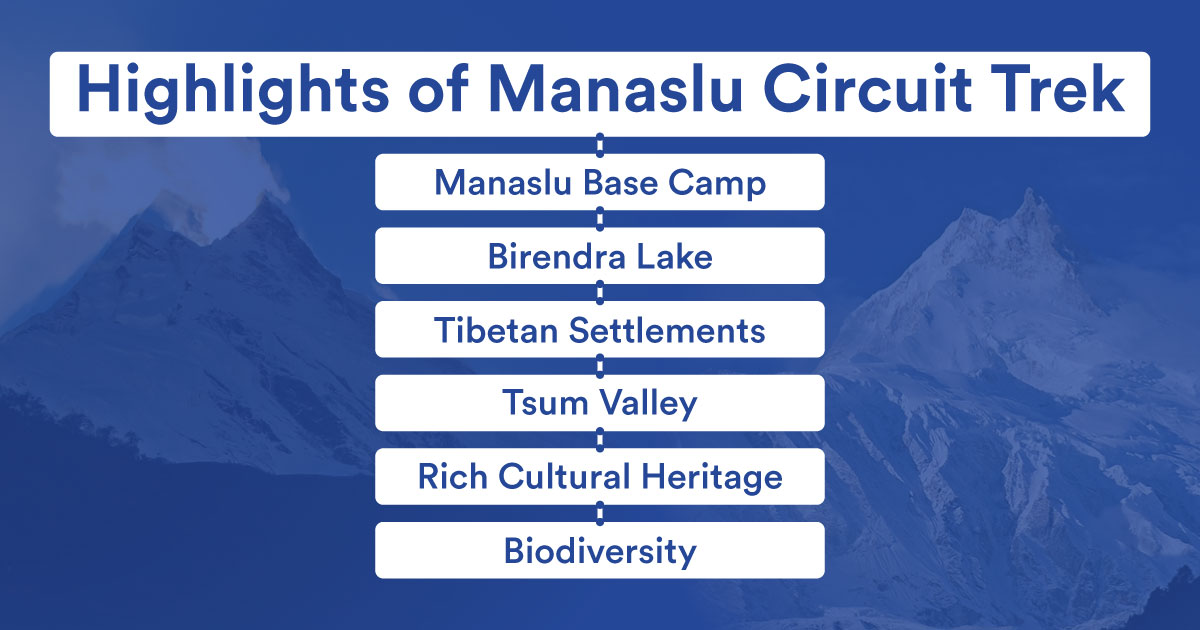
Enjoy the Peace of Trekking to A Less Popular Destination
Despite the abundance of natural and cultural richness, the Manaslu region isn’t that popular among adventurers around the world. It is obvious too, since any adventure enthusiast would definitely invest everything he/she has into the ascent of the peak of the world, Mount Everest.
However, a few adventurers prefer solitude over popularity and look for destinations that are yet raw and explored. If you are also one of those rare trekkers, book the Manaslu circuit trek and enjoy its rich offerings.
Never stop exploring!
FAQs
Expand AllDo you need a guide for the Manaslu trek?
The Manaslu Circuit trek comes under a restricted area trek. Hence, an officially registered guide is compulsory for traveling this region. A minimum of two people is required to get the permit.
What is the starting and ending point of the Manaslu circuit trek?
The 13-day Manaslu Circuit Trek starts at Macha Khola and ends at Beshi Sahar. It can be extended to 22 days with an additional side trek to the Tsum Valley.
Why should you choose Manaslu Circuit Trek?
Manaslu is the 8th mountain in the world. This trekking route is known for a less crowded trekking region and an authentic cultural experience. The Tibetan-influenced culture of the trail is also less crowded and less commercialized. The Gurung and Thakali people of the region have followed Buddhism since the early period.
Is WIFI available in Manaslu? How can I stay connected during the Manaslu trek if WIFI is not available?
Mobile networks and WIFI are available in the trekking trails of Manaslu Circuit Trek. Though some of the teahouses have Wi-Fi services, the connection is generally slow and unreliable. The connection requires an additional fee due to the remoteness of the region. In other places, one can get connected via 4G and 5G data packages from NTC or NCell sim card.
What is the best season to trek the Manaslu Circuit?
Most of the trekking routes in Nepal follow a similar pattern of seasonality. The autumn season (September, October, and November) is the best season for trekking to the Manaslu circuit and around the valley.
The spring season is another warmer warmer season good for the trekking. the forest is vibrant with the blossom of various species of rhododendrons, golden flowers, and anemone polyanthus.
What animals can be seen on the Manaslu circuit?
Animals like Tahr, Agali, Pika, Himalayan Marmots, and Snow Leopard can be seen in the Manaslu Circuit.
What mountains can be seen from Larke La Pass?
From the Larke Pass, we can observe the peaks Manaslu, Manaslu North, Samdo Peak, Naike Peak, Larke Peak, and Cheo Himal.
Related blog posts
Discover a choice of tourist destinations loved by most of our visitors. Whether you're on a jungle safari to spot rare animals or walking through a world heritage site, these well-planned itineraries cover the major highlights of Nepal.


